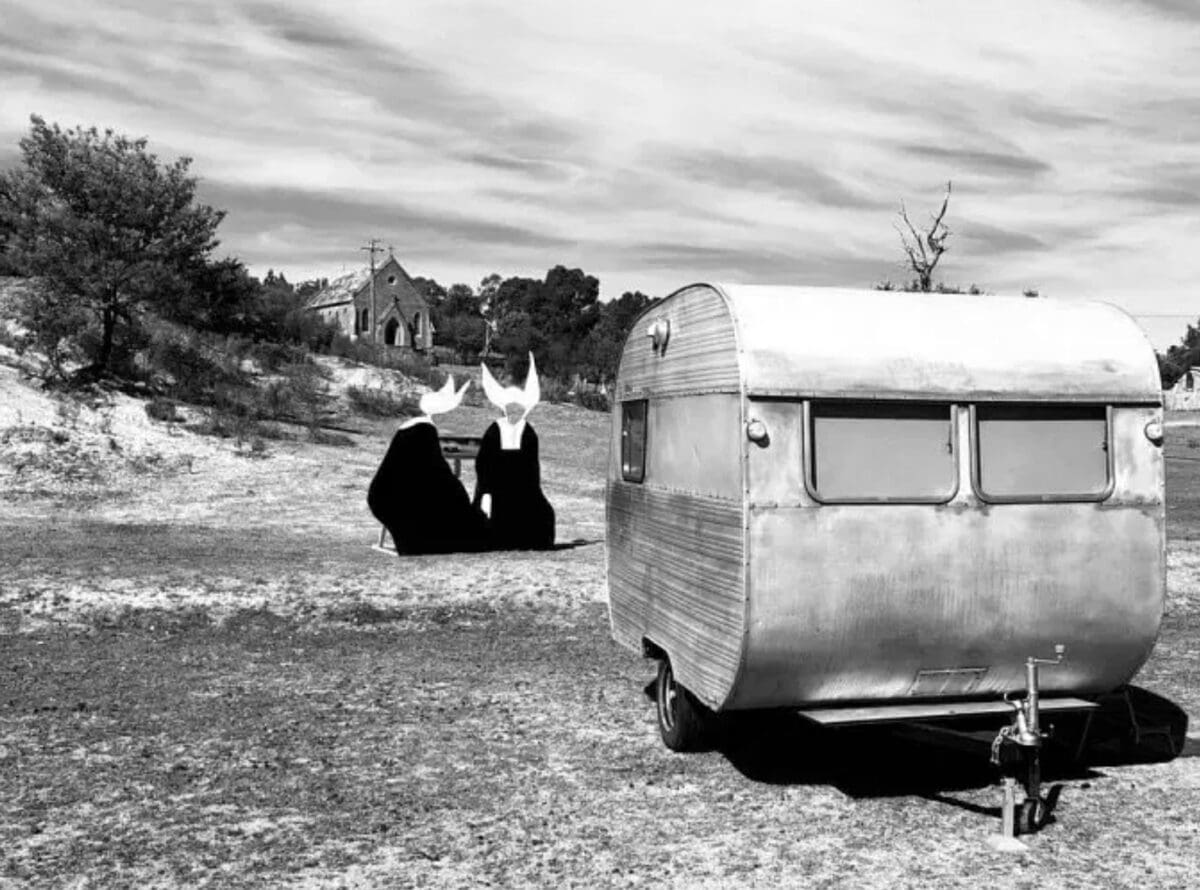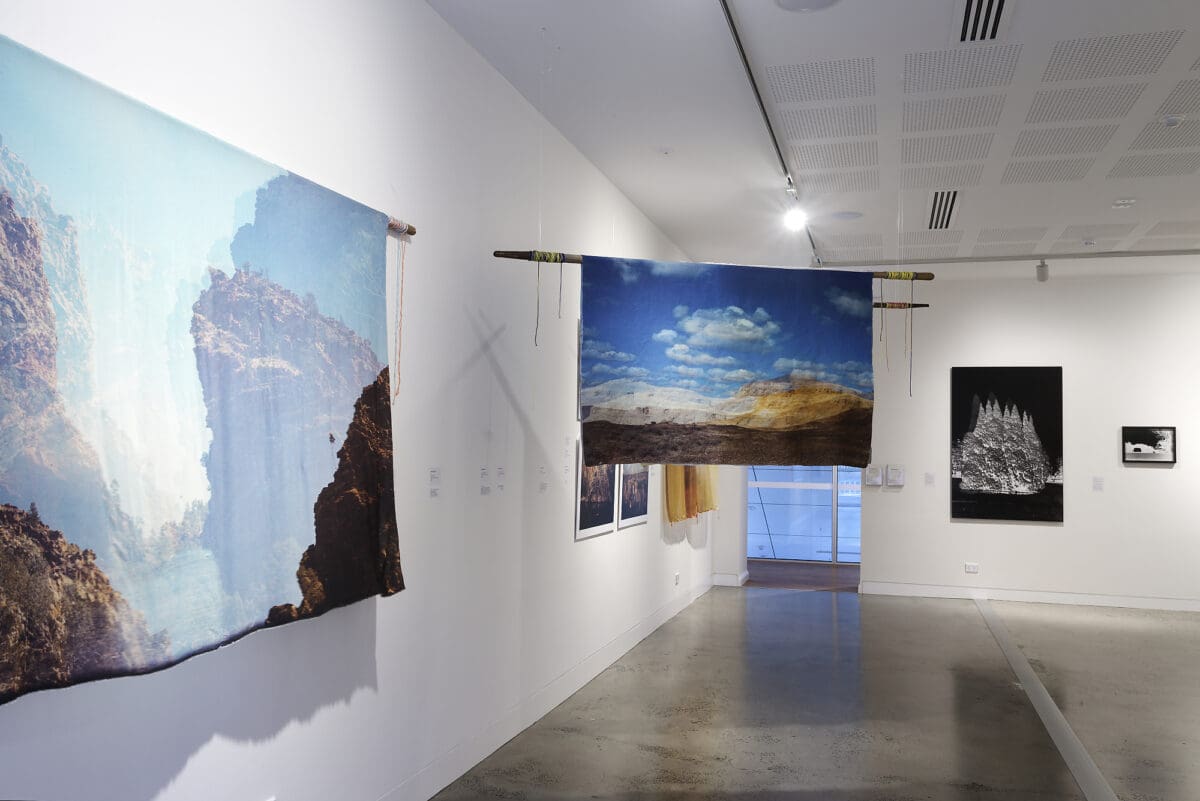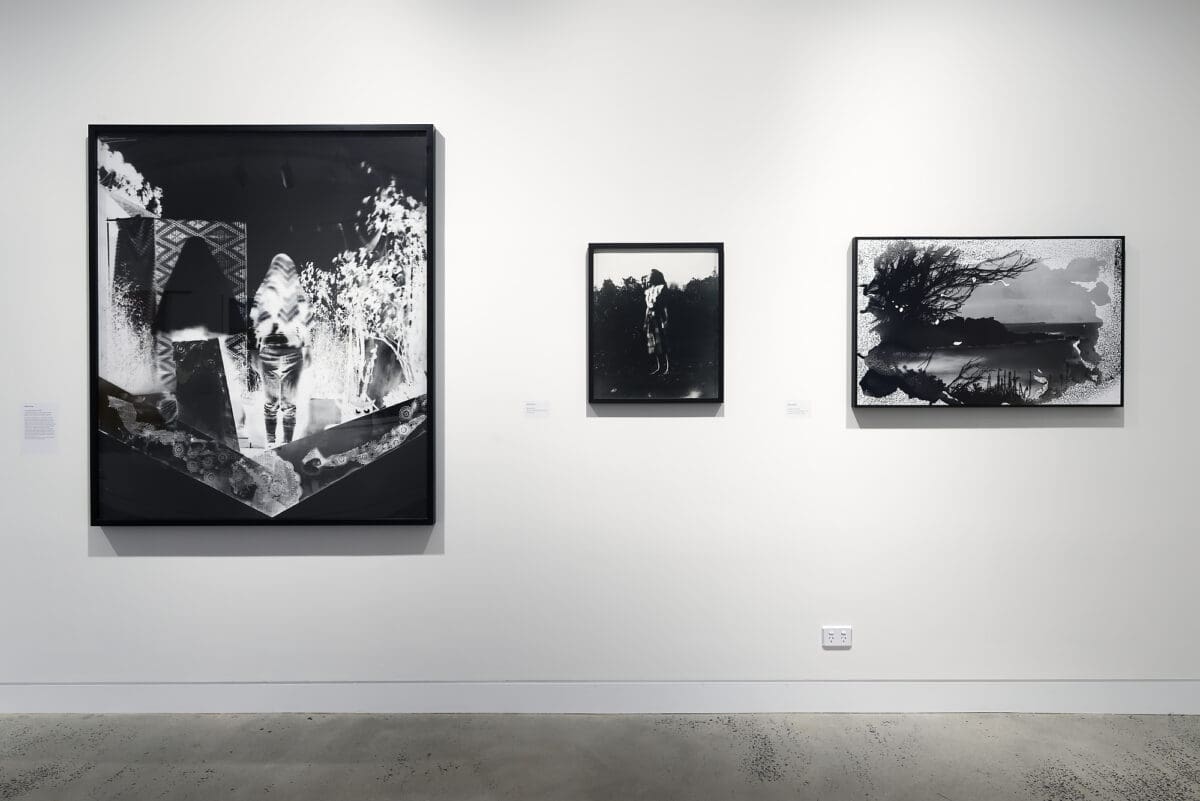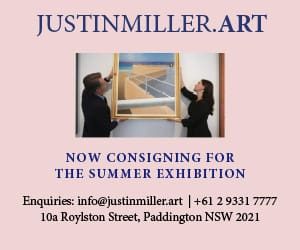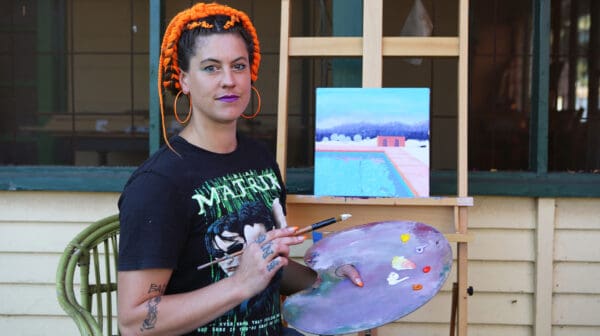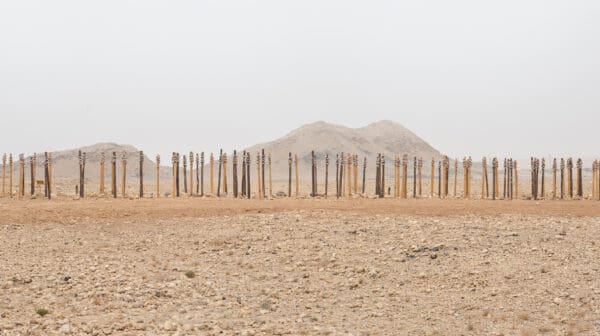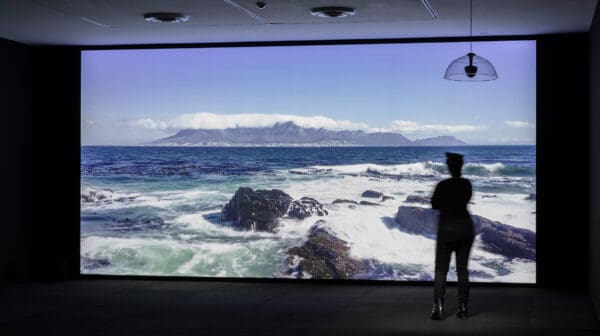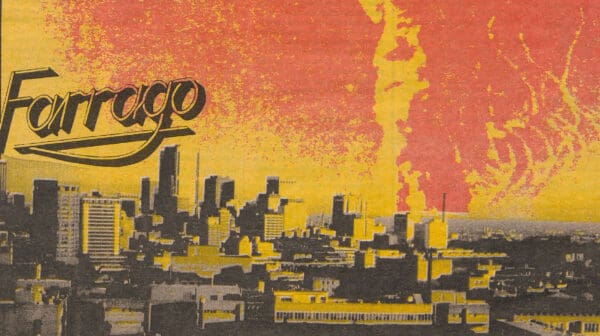In September 2024, Lismore Regional Gallery reopened after an essential restoration following the 2022 floods. Facing the deluge that left disaster in its wake, the gallery and regional projects reveal how a community can come together. This message feels even more critical as currently the Mid North Coast of New South Wales is experiencing the same destruction, not far from where this article is being written. And so, in the rebuild, and the exhibitions that follow, we are left to consider: what role does art play as we face the once-in-a-lifetime disasters happening once or twice a year?
Community is the cultural foundation of Murwillumbah-based artist Claire Conroy’s exhibition, The sky from here, at Lismore Regional Gallery. As a new arrival to the area, her art practice ties her to fellow artists. “The premise for the show was to explore connections in the region to people and place, and that’s based on me being a relatively new resident here,” she reveals. In doing so, it considers how art can foster attachment and relate a sense of belonging in new environments.
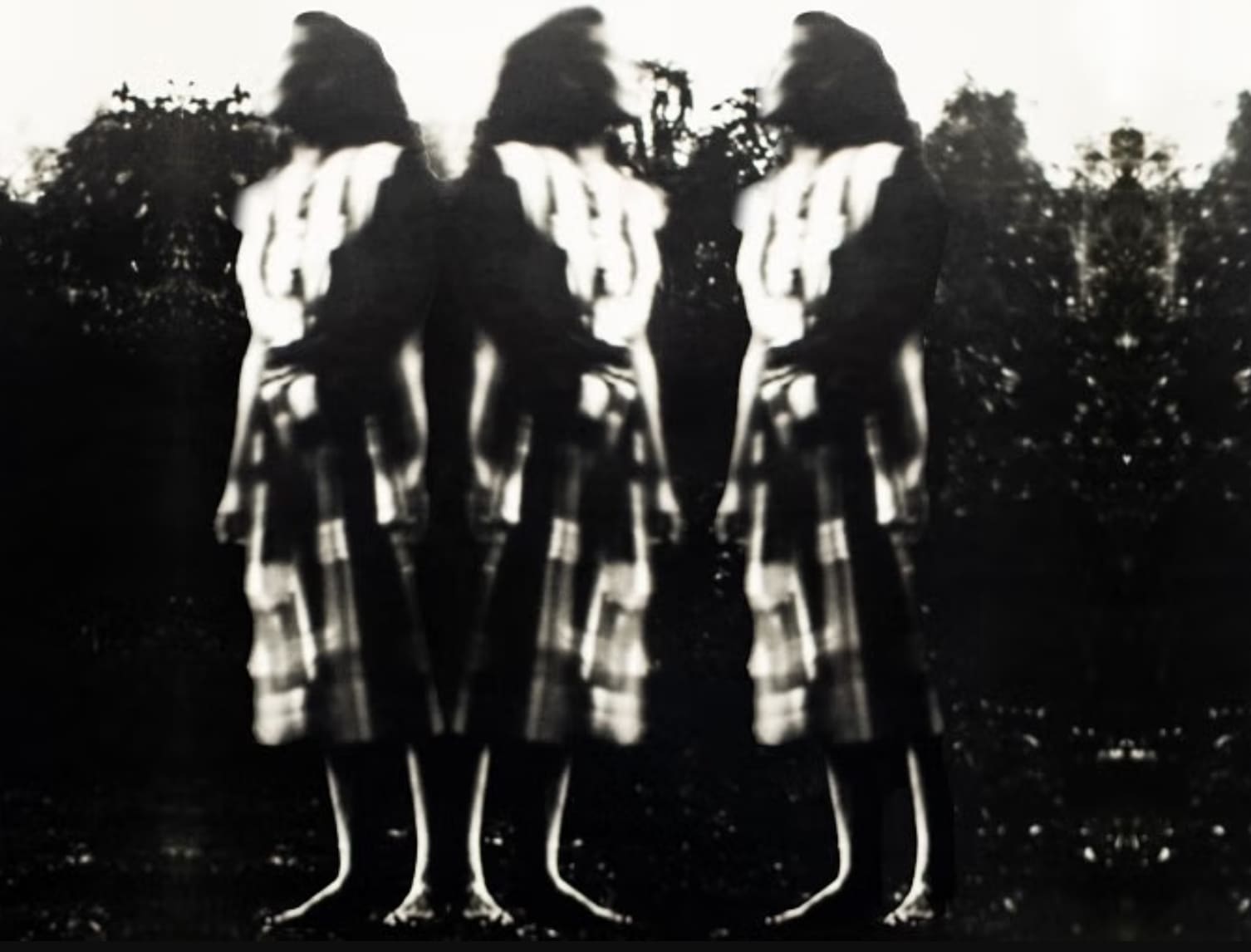
Even though Conroy is based over an hour north of the gallery, the sense of community spreads wide across the Northern Rivers in Northern NSW. Pockets of artists are dispersed through the landscape, creating and bridging an art scene quite different to the cities; one that has the potential to imbue meaningful and purposeful transactions based upon the physical act of travelling through the open, yearning landscapes. Similarly, The sky from here taps into this sense of expansiveness; the sense of space where the vistas sprawl and the sky feels endless, juxtaposing the figure in the landscape. Throughout the process and photographic artworks, the artist invites a connection to place and the environment—both a colonial constructed topography of trees and plants and the rock formations that predate humans. She muses, “The hugeness of nature, or the sublime within nature, has always really attracted me.”
Conroy’s method, camera obscura (pinhole photography), relies on the natural phenomenon of light passing through the pinhole. A deep study into the light of a location, how the sun tracks, is needed. The shoot may fall over several days so the artist is able to understand the atmosphere and how that changes the exposures and light qualities. The spectacle of nature meets the observation of light waves and optics; the photographer’s view is inverted and reversed. “It’s filled with mystery, poetics, and science,” she says. “The image captures in black and white [my] tussling with, harnessing and creating an image that holds that sense of wonderment.”

This process methodology allows for a deepening of social connections with her sitters as they commit to the shoot. For the exhibition, Conroy created new portraits of people who live here, reaching out to artists she admired, was inspired by, and wanted to work with. The pinhole photographic process unfolds over an extended period, depending on her camera and lighting on location. It can take days of returning to sit. But this time is part of the art. Conroy first explored this concept in Indonesia 18 years ago on a residency, making a long-exposure photograph over four hours. “In Bahasa Indonesia, they call it nongkrong, a way of spending time together, in turn, collaborating,” adds the artist.
Created over the last 15 years—such as The Witnesses (depicting conifer trees, almost abstracted, and towering over) from 2014, and The undercover lovers (featuring two figures blurred into the background with covered faces), from 2010—the exhibition reveals an in-depth view into Conroy’s practice. In her most recent works, the artist created a portrait of fellow artist Robyn Sweaney. The photographic process allowed the two artists time to delve into their relationship; the technical aspect of how they see and form images. “It was a really nice moment to connect and bond through art making,” says Conroy, adding that “portraiture helps you to connect in a deeply empathetic way.” Equally, Conroy’s capturing of artist Melissa Hunt in Melissa, The sky from here (2025), sees Hunt become the central muse for the exhibition, inspiring the title, and extending to an auxiliary sound piece and performance in the gallery.
Offering an Australian gothic or moonscape aesthetic, the photographs take on qualities of unsettling and haunting, yet enigmatic vignettes. That feeling of being in an unfamiliar landscape, of disorientation and estrangement. The artworks challenge their own aesthetics: the duality of the performances that make them, and the final image produced. They are a reminder to seek out the unexpected, but also, to find social connection and community at times when we need it most.
Claire Conroy: The sky from here
Lismore Regional Gallery
Until 22 June




